A tweet from BBC said: Polar Bear Kills British Tourist in Arctic! “How and where?” I thought and quickly read the article. Svalbard, of course, notorious for its big polar bear population and after reading it all, my first thought was not for the unfortunate young man killed, but for the guides. I can understand their position since I work as a guide myself. They were both injured. Oh man, I thought, they will carry this enormous pain the rest of their lives! What had happened? At that stage all details were hazy, but after reading more details which appeard over the upcoming days, without pointing any blame, I wondered, why in earth didn´t they have 24 hours guarding duty, a local guide with them who really new this bear country since the guides were that young, only 26 and 29 years old, and did they or did not have a dog with them? Anyway, after reading it all, (by the way, shame to these crappy tabloids again, what joy can it be to work for them and just write to sensationalize this tragedy?) it was hard to know, whether they had all that or not, but there was no doubt, that something had gone badly wrong. Media started calling and emailing me immediately, but I said I wasn´t the right guy to ask. I have only had encounters with grizzlies and brown bears, but never polar bears. Ask Jim McNeil. So I asked Jim to write this important article for us all!
Bear Necessities
by
Jim McNeill
When I sat down to write this article about my thoughts on polar bears I quickly realised that I could probably write a book about what I’ve learned over the years and the many and varied stories I could recount. Not just mine but friends’ stories as well. Close shaves, wonderful experiences, big mistakes and even funny events (my talks often include my own “funniest” bear encounter but you’ll have to catch one of those to hear it.) So I thought to myself how do I make the most of the limited space I have here? I also didn’t want to just regurgitate the training notes which accompany this so I came up with a bit of further guidance in the form the 4 D’s;
Don’t…; Detect; Deter; and ultimately, Dispatch.
So the first D – Don’t… go out into polar bear country without proper personal preparation and by that I mean having the right experience, knowledge, equipment and training. You can have all the right gear and all the knowledge but if you’re not used to the critical crisis of being faced at close quarters with a bear then it may be of no use.
If you’re not experienced yourself I would urge you to go out with someone who is and learn from them. Now that sounds an easy thing to do but unfortunately these days there are so many people who try and bluff these things that it might be difficult for the novice to tell the difference between who says they know and who really knows. So be carefully selective.
Before I went out on my own for the first time I made sure that I had done my homework. First of all I read anything I could get my hands on (both good and bad I’ve come to learn, retrospectively) about where I was going, what I might come across and who are the real experts in this area. So homework involves everything from reading first exploratory accounts through to sitting for many hours with the Inuit, gleaning all sorts of invaluable advice. Then take a trip with someone who really knows what they are doing.
Don’t go out there without knowing about polar bears. This is complicated by the fact that, like humans, each one is different and behaves slightly differently as a result, so it is always dangerous to generalise unless you have enough experience to justify trends. (Hence a person who has only encountered one or two bears has limited advice to offer).
The critical bit is being able to interpret the behaviour a bear is exhibiting. And that means putting some time in to study and read about the various behaviours. Is it being it curious? Is it predatory? Is it defensive? Has it got cubs? All these signs allow you to assess the situation and react accordingly. If you get this wrong the consequences can be deadly.
Don’t camp in known polar bear territory unless you have to. This is where evidence of bears exists. A trail-way, for example. Despite being naturally solitary, bears will quite often walk along the same paths even across seemingly desolate and uninteresting terrain. They have sort of polar bear highways where you can see a trail of footprints and scats (posh name for polar bear poo!) especially alongside cracks in the sea-ice, open leads, along beaches and the floe edge; all places where they find their food. Get to know the locality and talk to people who have been there or even better live nearby; even if that is a fair distance away. Inuit hunters will travel many miles away from their township. They will also have a wealth of general information for you as well as well as polar bear trends, if there are any.
(There are of course many more Don’ts in the training notes)
So having learnt as much as you can about the bear and the area you’re entering you then need to be able to Detect their presence.
Around the camp itself you can set up all sorts of improvised methods of detection as well as those marketed and talked about in the notes. Use the items around you to best effect. Ropes and skis and poles are all useful in setting up methods of hearing a bear penetrate your camp. Put any attractants such as food and rubbish away from the accommodation tent and put it amongst articles that will clatter and make you aware of bear presence. This won’t scare the bear but should wake you.
If you have to camp in known polar bear territory it is essential to set up a bear watch, much the same as a watch on a boat, and actually something really nice to do. So often when people within a team are preoccupied by the struggle of remaining sane whilst pushing the boundaries of their own endurance that they forget to stop, take a calming breath and take-in the incredible, often surreal, surroundings. The solitude of bear watch is a great place to do this and really begin to enjoy your time.
Then we reach Deter. From the training notes you’ll see a whole range of deterrents. Some work; some sometimes work and others are still of dubious effect. Now you can read all the instructions and have the best of imaginations as to how to use these devices but really you need to practice. It is only then you realise that by mishandling the bear spray you’ve rendered it useless or by being too heavy handed releasing the safety catch you inadvertently let off some of the pepper spray into your own eyes, incapacitating you not the bear! Not taking good note of wind direction and shooting a flare or worse a bear banger (airborne firework) over the bear encourages it into camp instead of away from; all these things you’ll only learn from actually trying them. So, to coin a phrase, practice makes perfect.
Practice, practice, practice! Our Ice Warrior trainees get sick of me waking them up at all hours, day-in and day-out with either a bear encounter or the sea-ice cracking beneath them! It might be painful and they might moan but it stands them in good stead for the real thing; and that they do appreciate.
Finally there is the ultimate; Dispatch. Occasionally, very occasionally, you will encounter a bear which will be intent on attack and there is nothing else you can do but shoot it dead. This is absolutely the last resort but you should be fully prepared to do so, which means armed with the right equipment and know how to maintain, repair and use it. Depending on the likelihood of encountering bears I equip our teams with either a high velocity rifle or shot gun (for those less experienced); or sometimes both. And the number of weapons can be as many as 2 per six team members (a straight line of 3 two man tents).
Just to put this into context I have encountered too many bears to keep track over the years; definitely hundreds. And of those I have only had three that really gave me serious cause for concern. I have never had to shoot at a bear, although I am always fully prepared to.
I also wouldn’t want to put people off. It is inherently dangerous and you should wholly respect that but being in the presence of such a magnificent animal and sensing the overwhelming feeling of being in their territory and seeing that they will do exactly as they want (realising that all you can hope to do is persuade them, gently, that you are not their next meal) is a life-changing experience itself. Venture forth and take good care!
My closest call;
On a solo expedition I once had a bear wake me with his snorting just 6 inches away from my left earlobe through a frail piece of tent material – better than any alarm clock! I was miles away from any open water north of the last landfall of Canada on the Arctic Ocean with absolutely no sign of any bears being around. It was April so there was plenty of open water for him to be feeding around but none near me. If I did encounter one then it would be well fed and therefore more curious than hungry. That was my thinking.
My first reaction was to make an inanimate noise, gently tapping the side of my stove with my thermos flask. This was enough for the bear to question what he was dealing with and back off just a little. Very importantly, not enough for him to get frightened, panic and start lashing out. The last thing you want to do to a curious bear is to appear to act aggressively as you’ll undoubtedly come off worse.
Hoping that he had backed off, I carefully unzipped my tent door (now with bear spray in hand) and moved the material so I could get sight of him who was indeed now some 5 metres away and evidently wondering what he had disturbed.
My rifle was now in reach, loaded and ready, having been left outside the door so as to avoid freezing up with condensation and I worked up the tapping into louder noise and started speaking to him. (It may be that he had been frightened by the sound of humans before so it is always worth trying).
He backed off further allowing me to get out of the tent and reach into my pocket for the pen flares and bear bangers whilst gently but assertively hissing and shushing him away. Now I deployed my flares and bangers and crashing noises (pots and pans and skis are all good) until such time as the bear turned and nonchalantly walked off with an air of boredom and dismissiveness. I had respected him, he had to some extent respected me and the encounter was fantastic.
Ice Warrior´s Polar Bear Manual!
Jim McNeill has clocked up 27 years of polar travelling and 33 years of expeditioning; thousands of miles mostly on nothing but skis and dragging his world behind him. Few, have that breadth and depth of experience in extreme environments. His guiding, safety and survival expertise is employed by BBC TV and Hollywood film crews on location all over the world – hot as well as cold.
With a career spanning environmental science, military, commerce and fire & rescue Jim has selected, trained and led highly successful teams from top-level corporations, through high risk polar expeditions, to critical lifesaving situations where effective leadership and hands-on teamwork are paramount. He has a passion for leadership and getting the very best performance out of individuals and teams, at any level and has regular input to the Senior Police Training College at Bramshill, Hampshire (NPIA).
In 2001 Jim founded the highly successful “Ice Warrior Project” an organisation which gives “ordinary” people the opportunity to become polar explorers and achieve extraordinary feats of endurance and endeavour. Through Ice Warrior, his aim is to develop people, discover change and deliver it to global audiences in a way we can all understand, fostering a much better understanding of the world we live in and on.
In 2006 he was ITV News’ own “Ice Warrior”, reporting the reality of climate change directly from the Arctic Ocean to international audiences. The story will continue next year as he attempts the last, so far unattained, World First in polar expeditioning – to be the first person to reach the very centre of the Arctic Ocean – the Arctic Pole or Northern Pole of Inaccessibility. This expedition will mark the start of an eight year programme of purposeful, worthwhile, extreme expeditions, culminating in 2020.

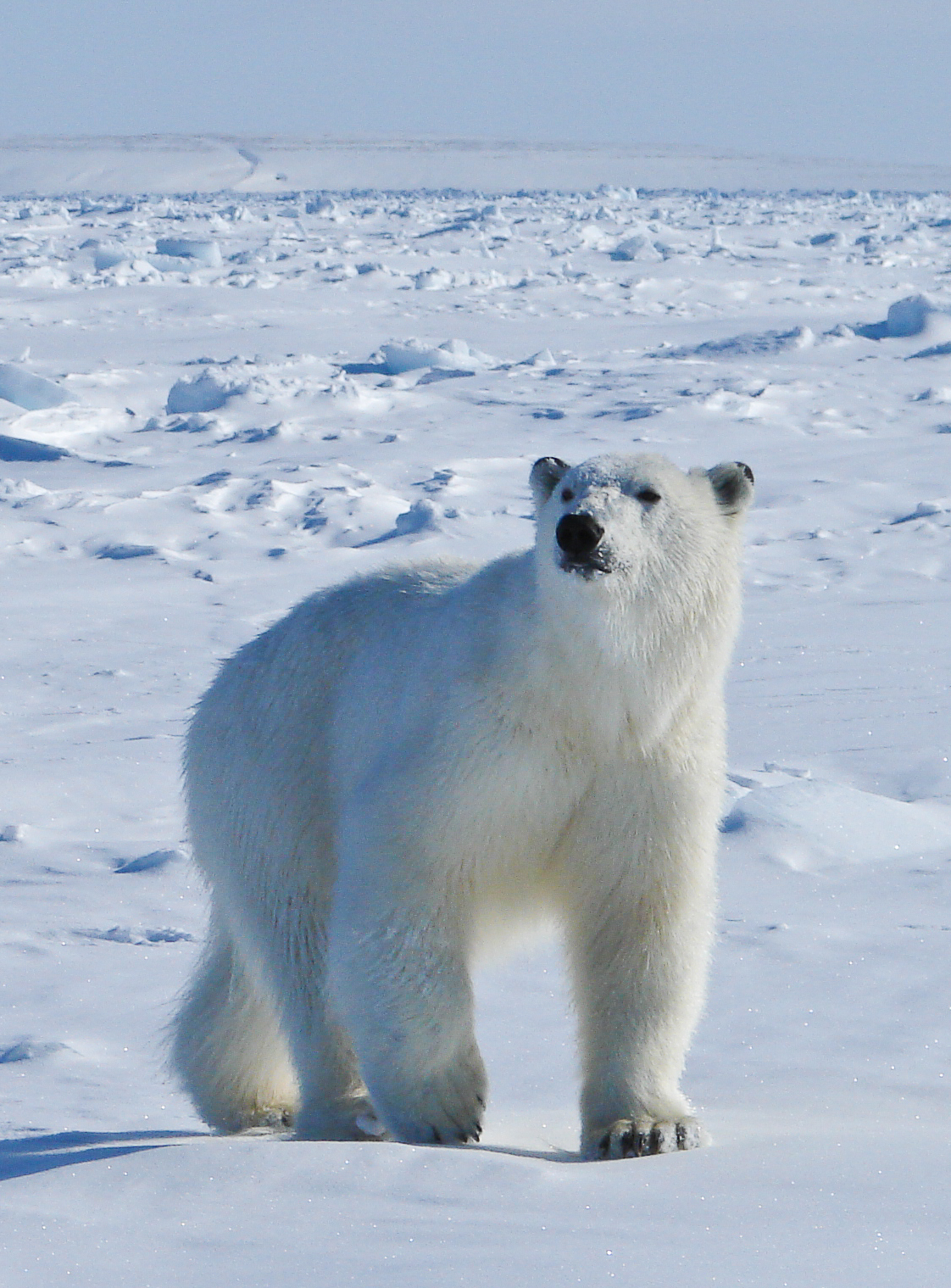
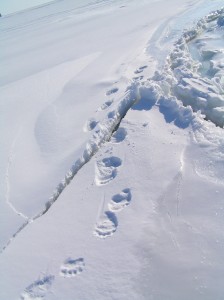
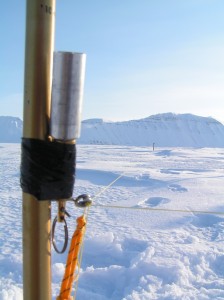
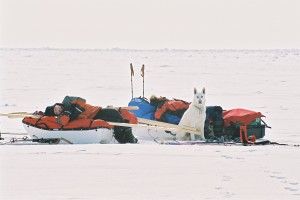
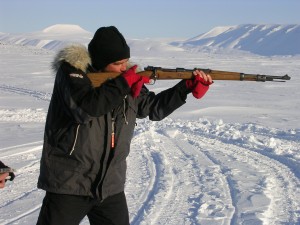
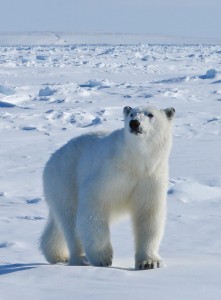
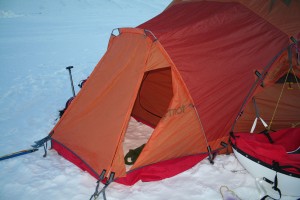


“Good job, Jim! And thanks, Mikael, for asking Jim to write this. There was much more to this story than the media reported, but the unfortunate facts remain that a young man lost his life and that an innocent hungry bear paid the ultimate price for the incompetence of the intruders into its territory. Sad. Very sad….”
I was up in Banff for the film fest and Børge Ousland presented a film on one of his solo trips and his discussion of the polar bears and how they engaged each other was really interesting, our media and advertising companies want to portray them as just cuddly big bears…..oh no
Mikael, hope you don’t mind that I reposted this on the American Polar Society’s FB page. I think it’s important instructional information.
Of course not, that is my wish and hope that great articles is reprinted, but please give my site as a source! It is a very important article and the downloadable manual is important!
A reader sent me this link to a You Tube clip were Jim is interviewed about the Svalbard tragedy http://www.youtube.com/watch?v=cLfujThWLps&feature=youtu.be
Hi Mikael,I just read this online about the incident http://www.bbc.co.uk/news/uk-england-14456536 Thanks for a great article! Abd
Interesting picture of the tear in the tent. Looks awfully similar to my own picture here: http://www.flickr.com/photos/marklkelly/481208928/in/set-72157600167657784
Ah that’s because it is. Master story-teller that Jim McNeill. Why don’t you press him for more details on that ‘1987’ bear attach he mentions in his video.
Please can you credit me for use of the picture. Many thanks.
Legendary with great experience of both life and climatic extremes. Excellent.